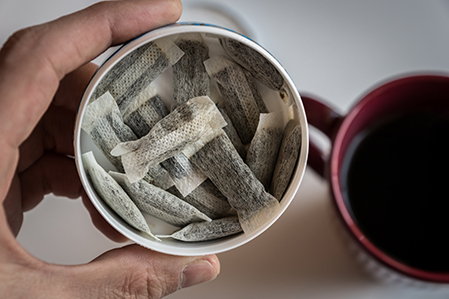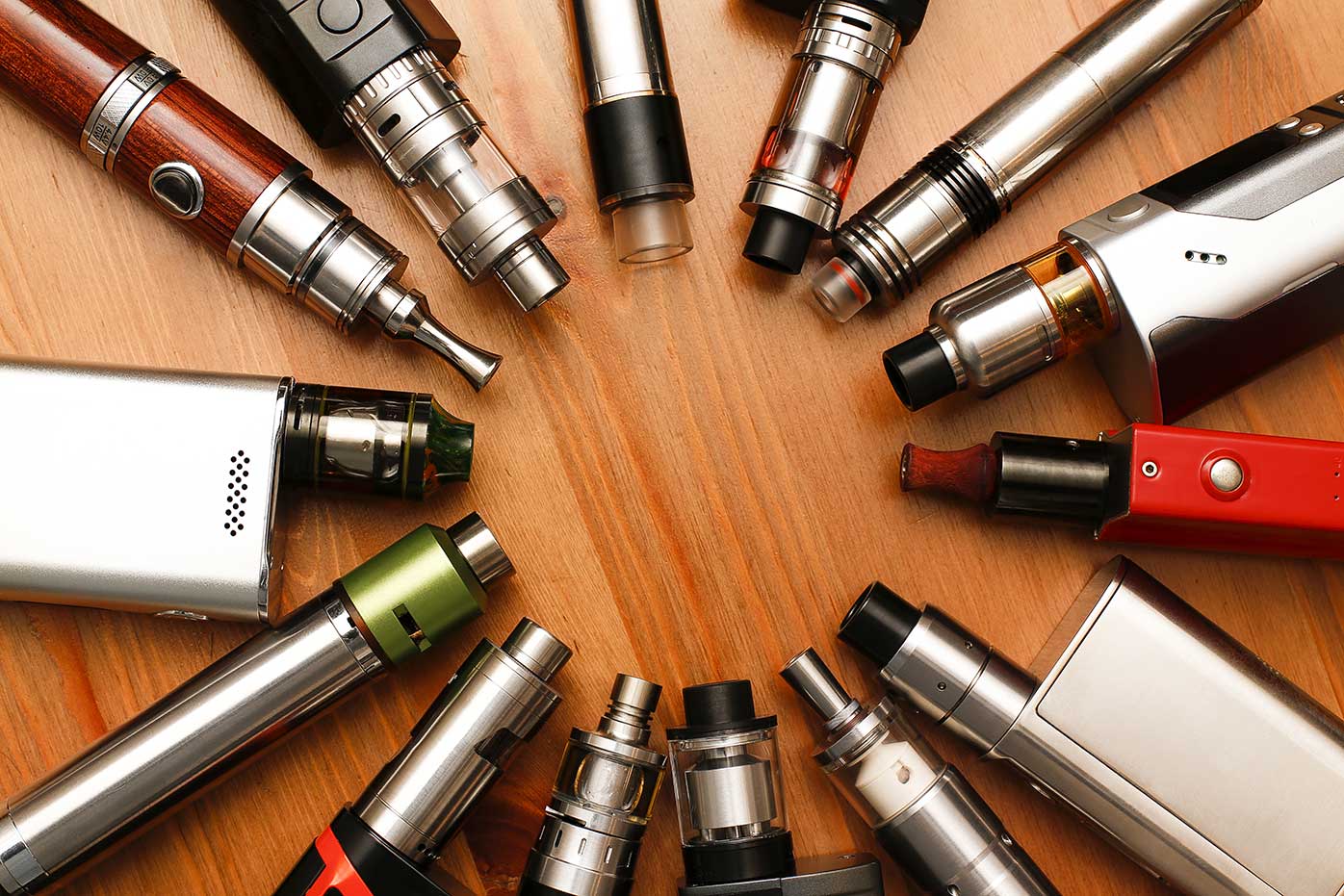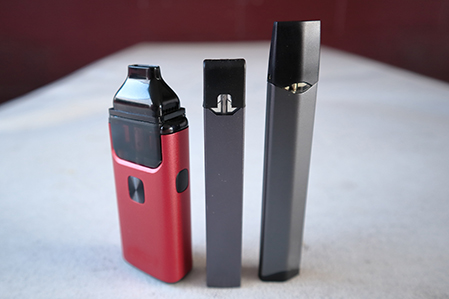Passive smoking
Exposure to second-hand smoke can result in a positive cotinine test, which may create challenges during the underwriting process when true non-smoker applicants test positive.4 Passive smoke contains more than 50 carcinogens, and studies show that concentrations of carcinogenic chemicals are much higher than in directly inhaled smoke.
Research indicates that exposure to tobacco smoke increases all-cause mortality by 10%, cardiovascular disease (CVD)-related mortality by 12%, cancer-related mortality by 9%, and respiratory-related mortality by 14% compared to non-smokers.17
Nicotine replacement therapy (NRT)
A growing problem is the use of nicotine replacement therapies (NRTs) – such as gum, patches, and other tobacco products, including snus in non-smokers. Snus, a smokeless tobacco product originating in Sweden, comes in a pouch that is placed between the upper lip and gums for approximately 30 minutes before being removed. Nicotine is rapidly absorbed across the mucosal membrane into the bloodstream. Each pouch contains approximately 15mg of nicotine, similar to a traditional cigarette, but prolonged exposure leads to higher nicotine concentrations in users.18

Nicotine products are often used to enhance aerobic performance, with many elite athletes using them to improve concentration and reaction times, control weight, and promote relaxation. When taken at higher doses, nicotine enhances the effect of serotonin and reduces feelings of anxiety and stress. However, studies do not support claims that nicotine improves athletic performance.19 Its use is associated with adverse effects, including nausea, vomiting, nicotine addiction, periodontal disease, heat intolerance, impaired cardiac function, and an increased risk of pancreatic cancer.18
An estimated 25%-50% of elite athletes on professional teams and in strength sports use nicotine products for performance enhancement. The rate is 28% among rugby players, while rates are even higher in other sports – up to 34% in major league baseball players, 50% in ice hockey, 56% in American football. These figures are substantially higher than the 25% nicotine detection rate in the general population.5,19 Reports suggest that the use of snus among elite athletes is rising.
Conclusion
The cotinine test does not determine smoker status; rather, it measures nicotine absorption from direct or indirect tobacco smoke, or nicotine-based products. It cannot differentiate between smoking from other nicotine sources, such as NRTs.
Furthermore, studies indicate a lack of standardization in optimal cotinine cut-off values, making it difficult to differentiate smokers, passive smokers, NRT users, and non-smokers. However, when cotinine values are assessed, they may provide insight into distinguishing true smokers from passive smokers, and passive smokers from individuals without second-hand smoke exposure.
* Sensitivity: the percentage of self-reported non-smokers classified as smokers (true positives); specificity: the percentage of self-reported non-smokers classified as non-smokers (true negatives)
** Picogram per milligram is equal to one trillionth of a milligram
RGA experts are eager to engage with clients to better understand and tackle the industry’s most pressing challenges together. Contact us to learn more about RGA's capabilities, resources, and solutions.







